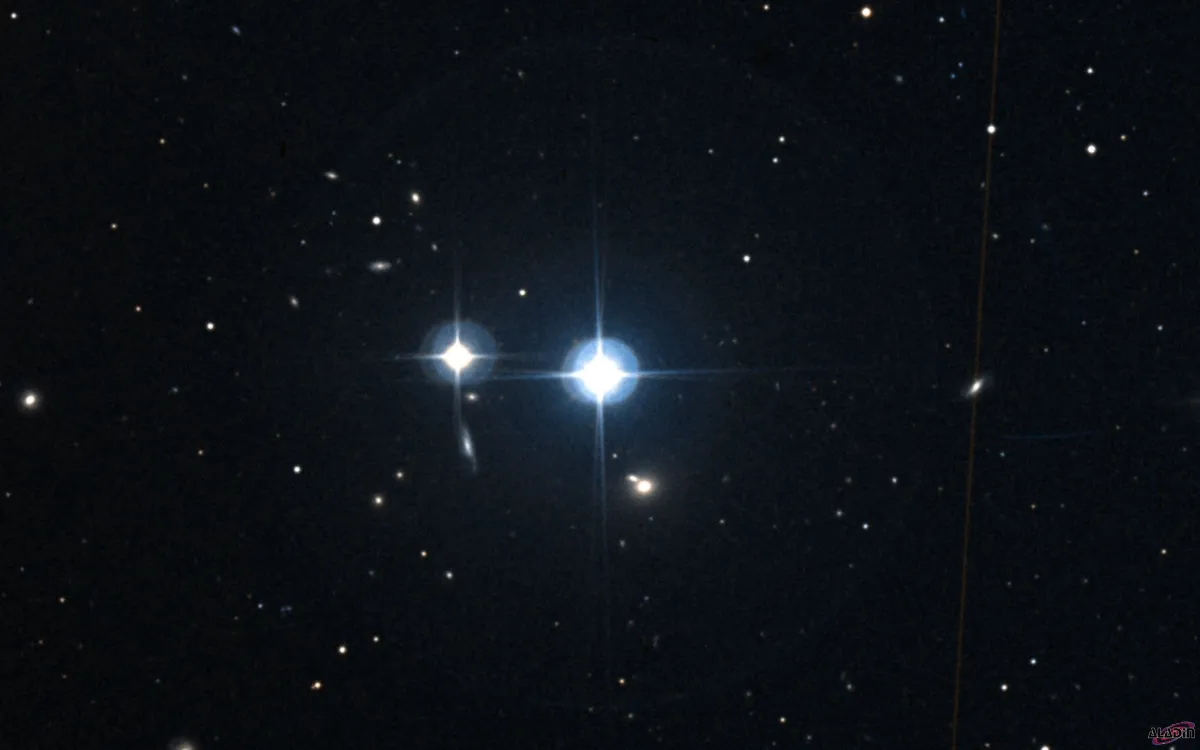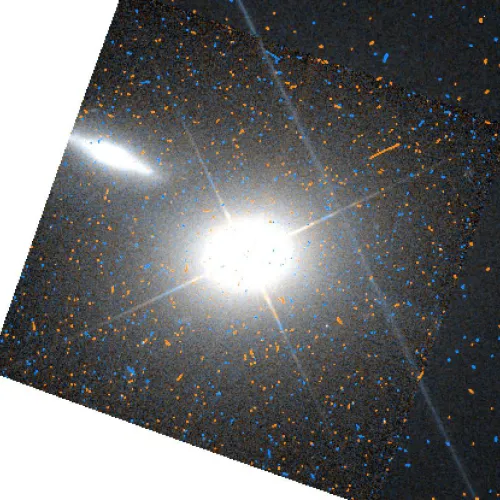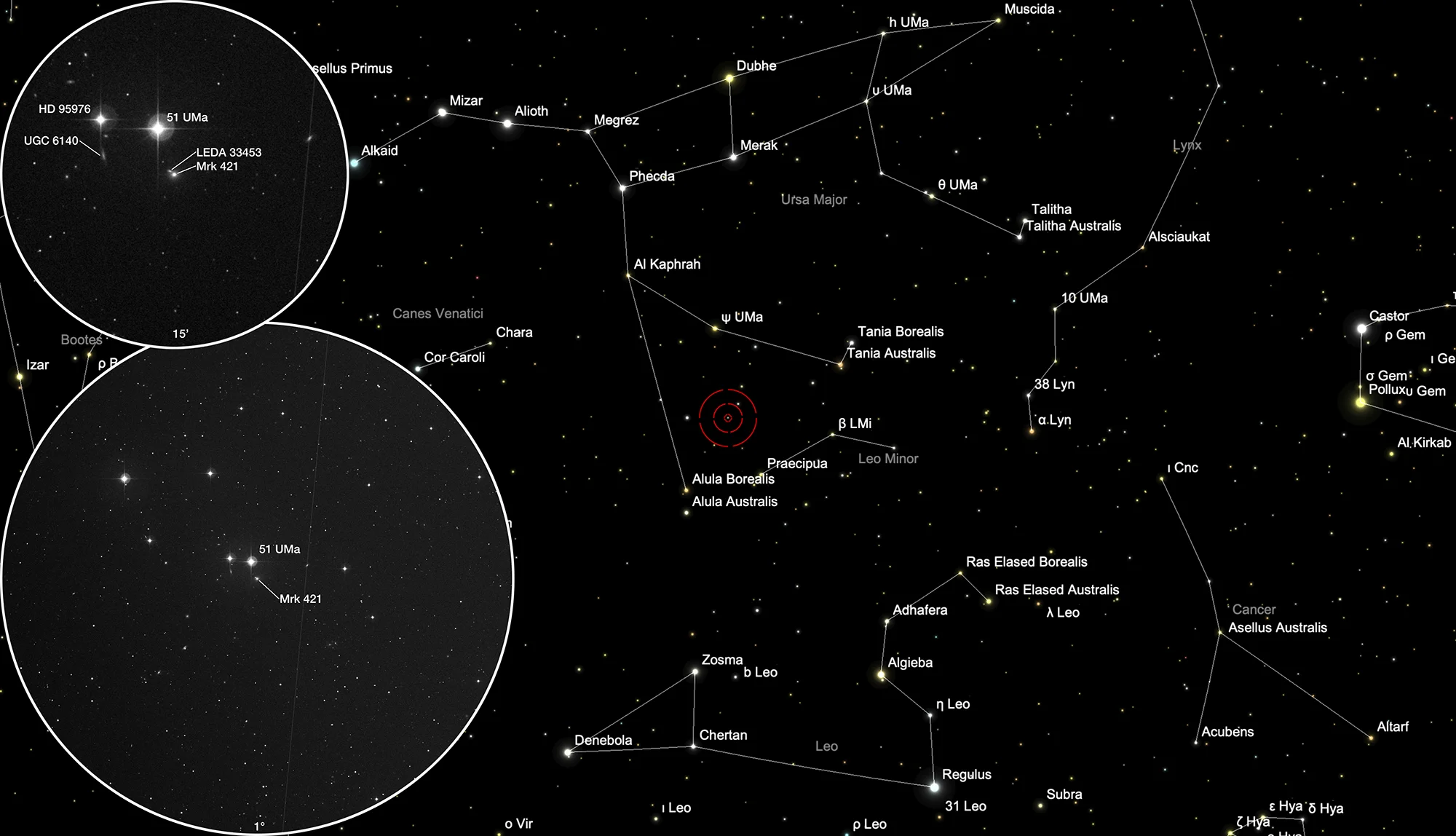Blazar Markarian 421

History
This galaxy was discovered by the Armenian astrophysicist Benjamin Markarjan during a study of galaxies with an ultraviolet continuum and active nuclei. It was listed in his fifth publication in 1972. [602] In 1973 the Swedish Astronomer Peter Nilson added Mrk 421 to his «Uppsala General Catalogue of Galaxies». [459]

Physical Properties
Mrk 421 is a giant elliptical galaxy that contains a blazar (blazing quasi stellar object) of type BL Lacertae. It is a strong source of radiation from centimeter-wavelenght up to gamma rays. Blazars are high energy active nucleus of a galaxy, consisting of a suppermassive black hole, where the relativistic jet points towards the Earth by chance. Due to the concentrated bundled radiation they appear much brighter than it would if the jet pointed into another direction. Mrk 421 shows a redshift of z ≈ 0.03 for which a distance of 127 Mpc is derived. With a visual magnitude of 12.9 mag Mrk 421 is therefore one of the brightest and closest blazars, together with Mrk 501 in constellation Hercules. Apparent magnitudes of Mrk 421 through different filters range from 9.0 in near infrared through 14.7 in ultraviolet: u 14.791; B 13.5; V 12.9; g 13.804; R 8.31; r 13.09; i 12.805; z 12.528; J 11.091; H 10.394; K 9.996
14 arcseconds to the east-northeast there is LEDA 33453 or Mrk 421-5, a small satellite galaxy which is an early morphological spiral and a Seyfert-like nucleus. It is likely bound to Mrk 421. [145, 603]
Finder Chart
The blazar Markarjan 421 is located in the constellation Ursa Maior, between the bear's hind legs. Finding its position is very easy, as it is nearby th 6 mag bright star 51 UMa, which forms with other four stars of about 7 magnitudes an eye-catching asterism. In the months from November to August this circum stellar constellation is highest in the night sky and therefore best visible.
